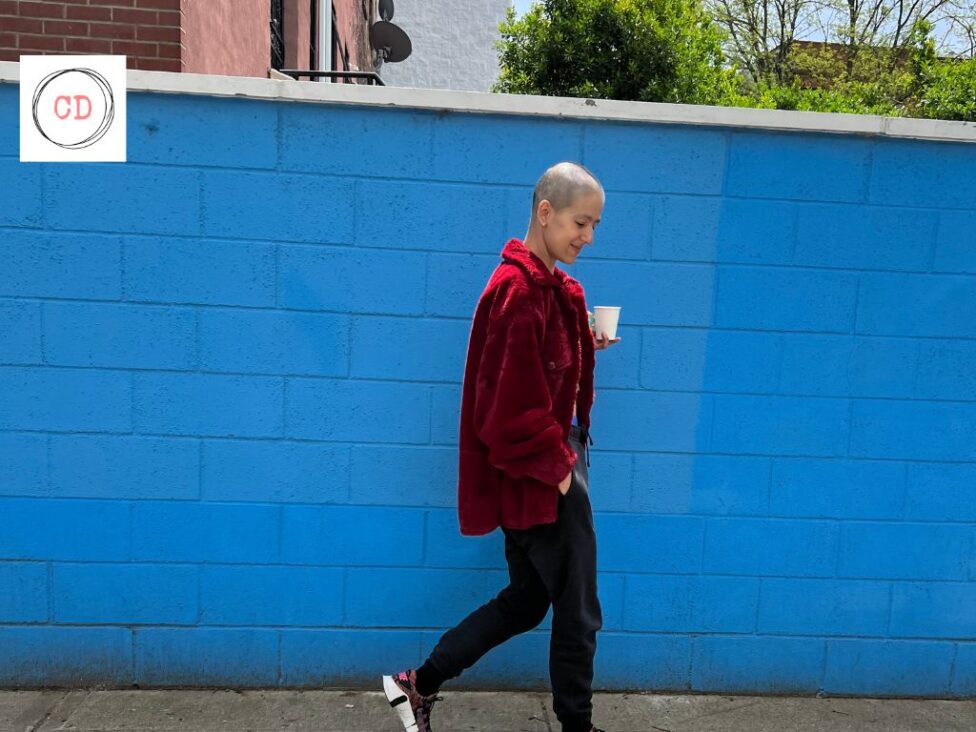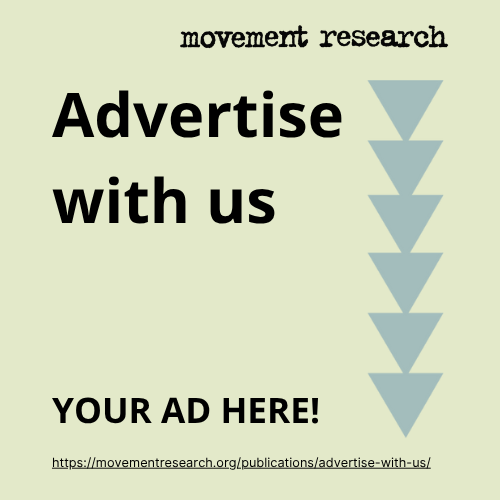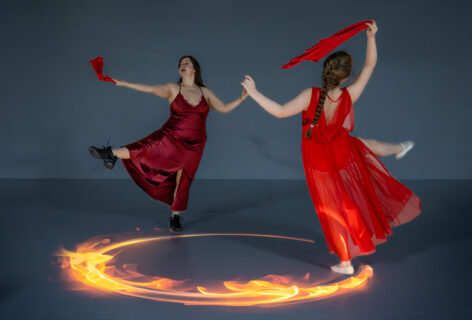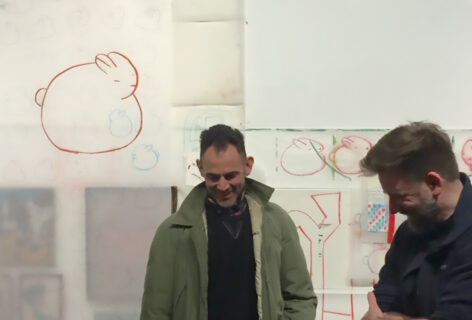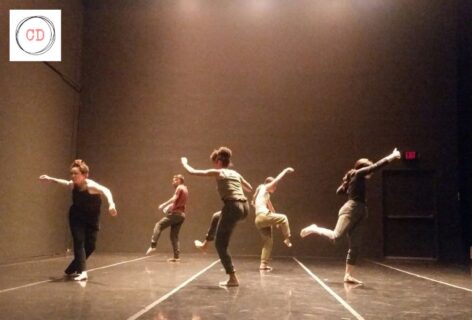A note from Jmy James Kidd, guest-editor
I wanted to work on this Cancer Dancer project for reasons similar to why I have created the organizations / communities / spaces throughout my life like AUNTS is Dance and Pieter Performance Space – something I needed that wasn’t available yet, or available to me, or available in a way I found inviting. I would have loved to have found the support / inspiration / camaraderie of a range of written experiences, images and videos by dancers who had or have cancer in their lives when I got my diagnosis and went through many, many treatments. Arriving on the “other side of cancer” I found myself cleaved into me as cancer patient that couldn’t really believe what I just went through and a new me that was completely lost and empty – who am I, who am I now? Reaching out to other dancer people that I know and that I don’t know, responding to my own writing prompts, peering into and sharing my own experience with myself and others, connecting to these incredible humans that are part of Cancer Dancer is part of my personal integration project that I hope offers insight and support to dancers as well as caregivers as well as anyone, should they find themselves with a god damn cancer diagnosis. I was interested in Dancers writing as Dancer People; from the rhythms, vocabulary, way of their own dance trainings, practices and lives. So much love to Kyoko Takenaka, Roya Carreras, Lindsey Red-tail, Sue Roginski whose writings had me in tears, laughter and deep respect. A resource guide, compiled by us all, can be found online at Pieter Performance Space.
Cancer Dancer Resource Guide on Pieter website: https://www.pieterpasd.com/cancer-dancer-resources
TINY left eye // Hitting the edges of the 4 by 4 mirror
Fogged up with steam // Piiing Pooong
I watched myself disintegrate
the creases of my lips curved upward
with // resistance
how funny this flesh folds
In 2022, I was diagnosed with breast cancer, the disease that had killed my mother and grandmother. At first, I thought I was lucky; we had caught it early. As we were preparing for chemotherapy, I began to feel pain in my abdomen, but my doctors reassured me it was nothing. I learned quickly not to over-explain to medical professionals; when I suggested maybe I had pulled my psoas in yoga, they waved it away. After too many no, no, it doesn’t happen like that, I made it to the fertility doctor — and that’s where the truth came out: a large, aggressive secondary tumor, with cancer spreading to major organs and across my abdominal wall. A big, breathless oh fuck.
I was grateful for Dr. Alexis, who took extra steps to take care of me. She gave me her cell number, scheduled multiple scans within an hour, brought me back into her office to check in after the initial ultrasound flagged terrible news, and called the moment the CT results were in. I remember sipping an iced dirty chai while asking her if I was going to die. Ten hours later, I was in the oncology office at Weill Cornell with whom she called the best oncologist she knew and her closest friend, Dr. Eloise Chapman Davis. It was confirmed that despite my mother’s negative results, I indeed carried the BRCA1 mutation. Apparently the genome research had expanded significantly in the past two years.
Too late to freeze eggs, I quickly realized that at thirty-five I would lose all my reproductive organs — ovaries, uterus, fallopian tubes, cervix — along with part of my abdominal sheath and my breasts. I also had to face six rounds of high-dose chemotherapy with the looming dread of going bald and losing my eyebrows and eyelashes. Even with a diagnosis like this where I didn’t know if I was going to live or die, I carried an overwhelming shame and fear surrounding baldness, privacy, and the possibility of being judged for not doing a good job “protecting myself.”
Hair for me had always been a source of pride. In the Persian community, hair is coveted and sacred — a signifier of beauty and health. I had the option of using a cold cap to try to keep it, but in the moment when so much was being negotiated, I chose to offer it up myself. I sent my hairdresser a voice note on Instagram, coldly stating I had cancer and needed to shave my head as soon as possible. I recall using lol several times as punctuation but I won’t dare clarify by returning to the thread. I walked in unfazed on the outside, folding with fear on the inside. We buzzed my long, thick, curly locks down to one inch; no drama of a slow loss. We talked shit, laughed, and kept pointing out how hot I looked. It eased the grief as I watched my history fall in tight spirals across the floor.
I inherited dance and disease from my matriarchy, and both taught me how to fall with precision, with poetry.
My first experience with cancer was hearing my mom tell stories of caring for my grandmother, then at sixteen, watching my grandmother get re-diagnosed with terminal cancer after twenty years of remission. She slowly replaced her beloved raclettes and medium-rare steaks with Ensure. The family pattern deepened when my mom was diagnosed at forty-one, while pregnant with my sister. I left my fellowship at Alvin Ailey to care for her — just as she had done for her mother. This lineage continued: losing my mom in 2020, then facing my own misdiagnosis in 2022, which stripped away my ability to have children and the privilege of a strong, unmarked body. My privacy. My identity — tangled in the thick mythology of my hair.
Fear and vanity are deeply intertwined, braided into all that I was about to lose. Ridiculous in a way — and yet also revealing of the persuasive, systemic power of the patriarchy and its impenetrable gaze.
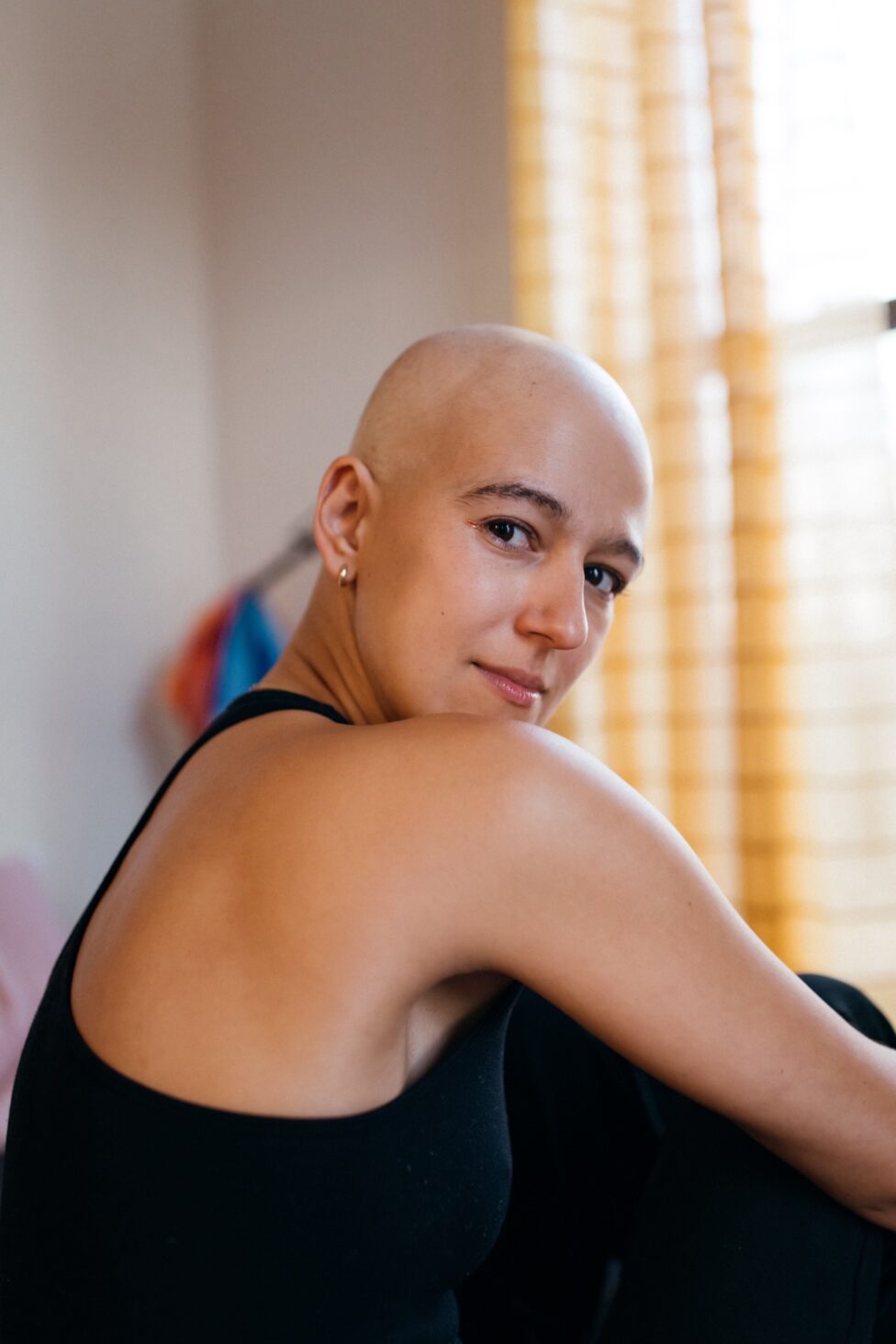
For me, reading Susan Sontag’s Illness as Metaphor was like a permission: to refuse. To meet illness literally, without metaphor. Not as a war. Not as punishment. Not as a reflection of repressed emotion. But as a fact in my body. That refusal became resistance. It let me turn away from the suffocating idea that cancer was my fault, or that I had failed to protect myself. Instead, I noticed what was actually happening: I was getting treatment that made my body hurt, I had a port sticking out of my chest that made receiving chemotherapy easier, my baldness was only a reflection that fast-growing cells were being killed, and I had chosen the most aggressive form of treatment and prevention through surgery. Even the language of “battling cancer” felt like an imposition. I didn’t want to battle with my body; I wanted to live in it unapologetically, surrender to the flow of what was happening. To stay literal was to stay honest, and I learned that could be its own form of liberation.
As I was processing all of these thoughts and emotions surrounding my diagnosis, I simultaneously watched Mahsa Amini, a twenty-two-year-old Iranian, beaten to death by the morality police for not wearing her hijab correctly. Her death ignited a generational uprising among women silenced for decades since the 1979 Islamic Revolution. Women took to the streets in protest, removing their hijabs and many cutting their hair in public. This act of defiance was a direct fuck you to the state, a plea to be released from the prison of their oppressive gaze enforced by law. As Persian women, our hair is both coveted and policed — exalted as a marker of beauty, yet wielded as a weapon of suppression. The protestors were doing something transgressive and empowering by retaliating in this way, and it gave me courage to do the same. If they could risk their lives for acts of reclamation and protest, then I could claim pleasure and exposure as my vehicle for rewriting my relationship to illness and lineage.
Activism looks different in a body drenched in pain. On my worst days, I lay on the floor of my makeshift home studio, watching the candlelight bounce against the walls, composing images and dances in my mind while softly wiggling my toes and finding the soft edges of my spine. I spent hours watching the wind shake the leaves to shifting tempos and the light morph my terracotta walls. Because my body was in so much pain, I found new ways to move things in and out of it. My writing practice grew, and the desire to use my voice began with soft humming. With the help of my dear friend and mentor, Samita Sinha, that hum turned into a harvesting of my tongue and my voice, opening a new passage for study and expression. With this, my movement practice became a series of reimagining and reorienting around pain. It meant meeting my body with radical self-love through the act of study and pleasure.
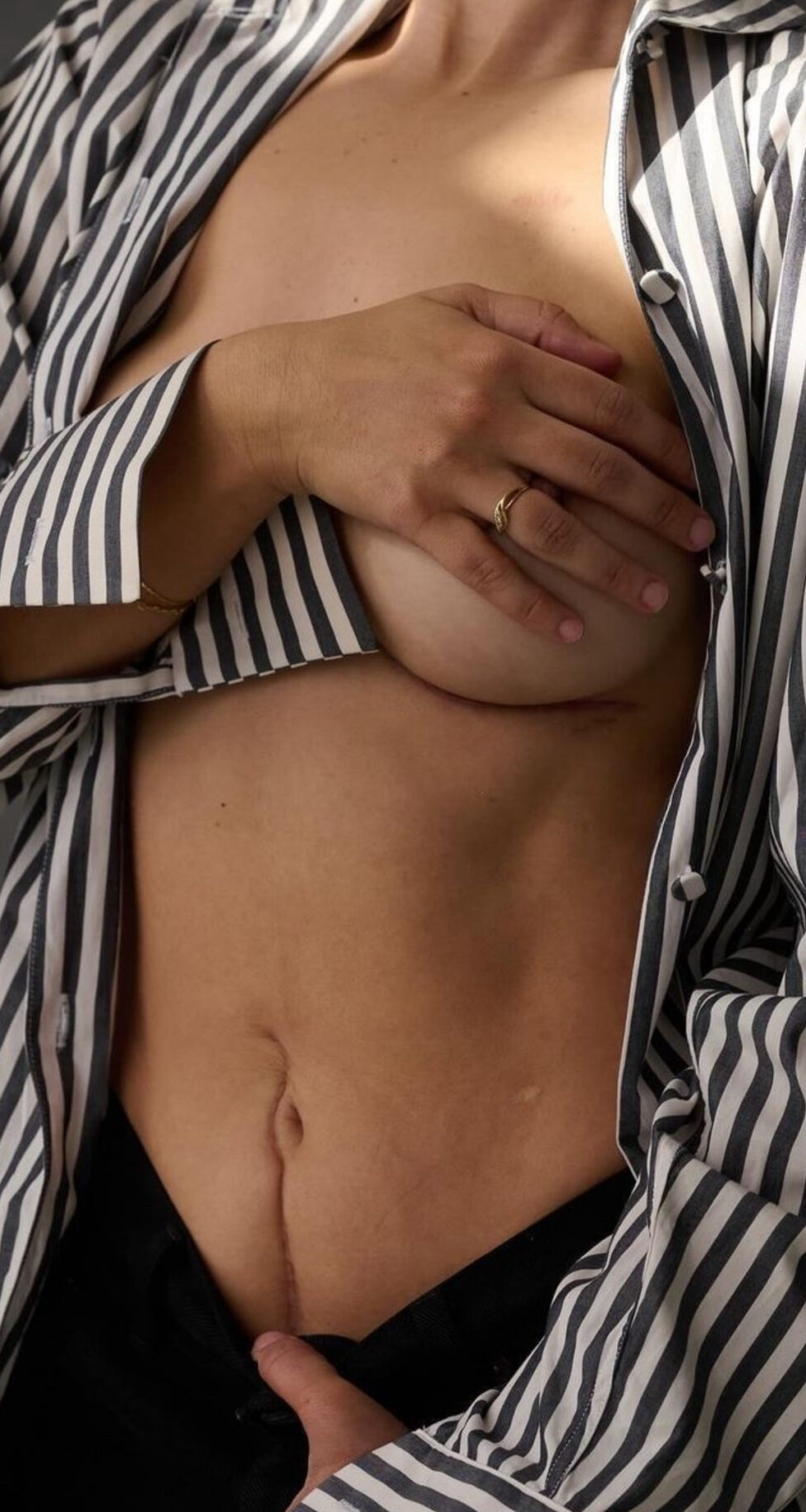
Chemotherapy hurts, but what hurts more is the medicine they pump in you to produce more bone marrow, and the tingling that happens all over your feet and hands from the medicine burning your nerves. I observed and moved with the sensation of the little mice gnawing at my bones and the relentless, unruly fatigue. I used my years of improvisational tools to create parameters that my body could meet, and scale never felt more generous. Exploring in this way shifted my relationship with movement from one that generates performance into an act of invocation. Practicing release, with the optics and possibility of my body, created a new entry point for me to engage with my illness tangibly. A fold, a shake, a series of tiny circles painted in the air felt — important.
In the same way that I used a fold, a shake, and a hum as a form of protest, I came to see ornamentation and sex as another device for choreography — one that met my body with presence, pleasure, and defiance. I draped myself in a light pink wig, metallic sparkles at the corners of my eyes, colorful bandanas, a red fake-fur jacket from my lover, and my skin dripped with Le Enchanteur talismans. On good nights, I went out with friends to hear live jazz. I dated, I had sex — bald, with my port bulging, chemo brain in full effect. I didn’t hide it. I showed up in discomfort paired with laughter, because it felt better than tears. Nothing signals illness quite like the baldness in women, or so they taught me. In the Persian community, where beauty and hair are interwoven with pride, value, and status, being unapologetically free with my diagnoses was its own scandal. Despite my family’s concerns about privacy and judgment, I refused to be veiled.
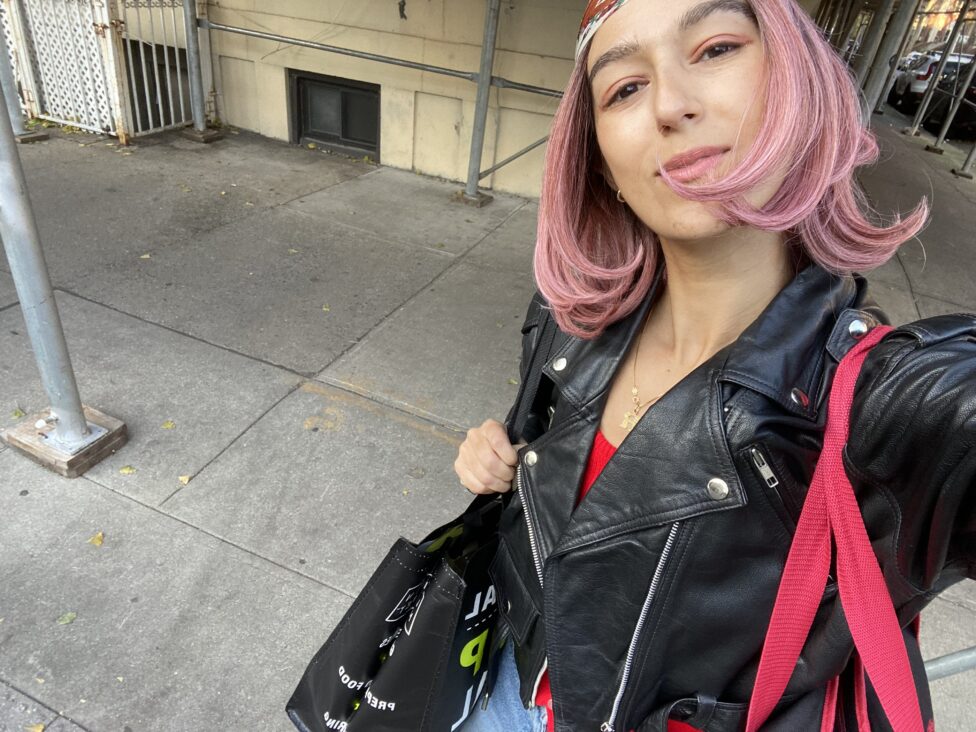
Stigma is a product of patriarchal indoctrination, especially surrounding the notion of illness in women, particularly women of color. It shrinks, it silences, it isolates. I will never forget Dr. Chapman explaining to me that the internet telling me I had a five percent chance of making it to two years was a lie. The data was based primarily on white women over the age of sixty-five. When speaking to other Persian cancer patients, the theme that kept arising for us all was secrecy and judgment.
Joan Morgan’s notion of the Honest Body asks us to share the truth of lived experience, no matter how messy or contradictory. The honest body refuses to conform or collapse into idealized narratives — it insists on holding ALL bodies, black, brown, white, straight, trans, queer, those facing illness, or varying disabilities. For me, that means letting baldness, scars, grief, and pleasure exist side by side, visible without arranging them into something more palatable. The embodiment of these notions, through my practice of Moving While Hurting, has become an antidote to what sought to diminish me. In the study of my honest body — the minor movements and radical gestures toward pleasure beside pain — I found liberation from the web of metaphor pre-imposed by my entangled history with illness, and the cultural contradictions surrounding hair, surveillance, and sovereignty.
Moving While Hurting is a movement practice where pleasure, eroticism, curiosity, and celebration co-exist with illness. It is a practice of negotiating – where a hum can take place of a développé or the soft play of folding your fingertips to the tombak is an act of transmutation. In this motion toward the sovereign body is where I find hope — that dance and study will sustain me through each transition of my life. There will always be motion. My body will meet me, and I it, regardless of the circumstance.


